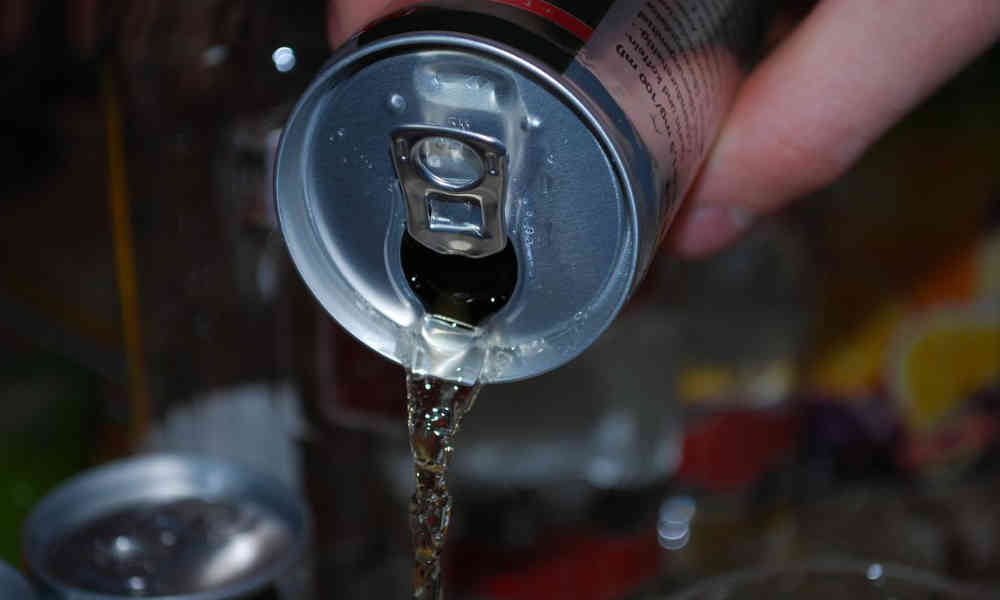So which energy drink is best? Is Mountain Dew Amp a loser? Or is Hiball Energy Sparkling Energy Water better? Which brand uses green coffee beans to get its caffeine? Here’s a guide to help you make the right choice. Before you buy any drink, read the label and make sure it contains the right amount of caffeine and other ingredients.

Hiball Energy Sparkling Energy Water is the best energy drink
If you’re looking for an all-natural, caffeine-free energy drink, you’ve probably heard of Hiball. It combines sparkling water and organic caffeine with ginseng, guarana, and B vitamins. It also contains no sugar, carbohydrates, or preservatives. Plus, Hiball is made with no artificial sweeteners, gluten, or sesame seeds. It’s also caffeine-free but still packs a punch.
The name of the drink itself is a bit strange, but it’s actually a railroad signal for “full speed ahead.” That makes it a great alternative to Red Bull or other brands. And, unlike Red Bull, Hiball is lighter and fresher tasting. It’s also great in mixed drinks. The sparkling water also contains vitamins and minerals that promote immunity, as well as electrolytes that help you stay hydrated.
Although the branding of Hiball does not scream “natural,” it’s a good alternative for people looking for a high-energy beverage. The flavors are not overpowering, and they are less than half the caffeine in Red Bull. Ugly’s caffeine content is 160 mg, but the bubbles are standard and loosen up at the end. Hiball is also better for people with diabetes and heart disease.
Sprite
Sprite comes in four flavors. In addition to sparkling fruit flavors, Sprite is available in plain club soda and tonic water. It contains the same energy-boosting formula. And it’s dairy-free, kosher, vegan, vegetarian, and keto-friendly. It also has a zero-calorie and carbs rating, making it a good choice for people who want to eat a balanced diet without consuming too many calories.
ZOA Zero Sugar is the best energy drink
If you’re in the market for a new energy drink, ZOA is a great option. This drink offers two versions: a sugar-free 15-calorie version and a regular 100-calorie option. It contains 160 milligrams of caffeine, which is a moderate amount and is a great option if you’re watching your caloric intake. In fact, caffeine consumption has been linked with cardiovascular problems, obesity, and high blood pressure. Unlike most energy drinks, ZOA has no harmful effects while still providing enough energy to keep you going.
The 100-calorie version of ZOA uses sugar as the primary sweetener, while the zero-sugar version uses Stevia to provide additional sweetness. Each 16-ounce can have about 23 grams of sugar, compared to the recommended daily intake of 25 grams for women and 36 grams for men, according to the American Heart Association. This drink also contains sucralose, an artificial sweetener that has been around since the 1990s. While it’s safe for people to drink, some studies have linked the substance to increased cancer risk in mice.
Although ZOA Zero Sugar contains less sugar than most energy drinks, it still has a high amount of caffeine, which is equal to two or three cups of coffee. However, this amount can be too much for some people, especially when combined with other stimulants. Studies have shown that caffeine can cause headaches, nervousness, and dizziness, so you should be aware of the side effects of this substance. ZOA Zero Sugar is the best energy drink for people who are trying to lose weight or improve their overall health.
The ZOA Zero Sugar Energy Drink contains 15 calories of naturally-flavored energy. The product does not only claim to provide more energy than its rivals but also improves the immune system and increases focus. In addition to providing energy, ZOA Zero Sugar helps people achieve their goals and unleash their inner warriors.
Early Bird uses caffeine from green coffee beans
The pharmaceutical, cosmetic, and soft drink industries are major users of natural caffeine obtained from decaffeination processes. The most representative application of this process is supercritical CO2 extraction, which is a greener alternative to organic solvents. However, it is slow near the CO2 critical point. A combination of SFE-CO2 with ultrasound can improve selectivity and mass transfer. Nonetheless, it is not scalable yet.
The formula includes electrolytes in the form of electrolytes. This is a necessary part of the formula since dehydration during sleep can leave you feeling drowsy and in a fog. The ingredients in the EarlyBird drink are carefully chosen to help you wake up in the morning. The company also combines them in precise doses to prevent dehydration. The result is a drink that has the potential to increase your energy and improve your mood.
To determine whether caffeine is produced from green coffee beans, researchers first analyzed the density of the beverage. By measuring the densities of both the dry and wet coffee, they could determine whether the beverage had the same caffeine content. In this case, the dry weight of the coffee was higher than the wet weight, which is a key factor in determining the concentration of caffeine. It is then calculated using a standard of caffeine, which was purchased from Alfa Aesar.
Mountain Dew Amp is a loser
Its flavor is overpowering, and it is caffeinated. In fact, it is not only overpowering but also overly strong. You might want to avoid Mountain Dew Amp if you’re looking for a great energy drink that doesn’t cost an arm and a leg. Read on to discover why it isn’t worth your money.
Amp is an energy drink produced by PepsiCo and distributed by Britvic under a license from PepsiCo. The brand was first released in 2001 and sold under the Mountain Dew soft drink brand. In 2009, the company separated the energy drink from Mountain Dew and rebranded it under its own name. The company changed the labeling to better promote the drink’s increased caffeine content, and in 2018, the company removed the Mountain Dew logo from the beverage cans.
Although AMP was once a great seller, its flavor has become a bit boring over time. Pepsi/Dew tried a series of facelifts to revive the brand, but it was unsuccessful. The drink’s popularity plummeted when it switched to Dew branding. Despite the poor marketing, Amp still remains popular among athletes and people who want a boost.
When choosing an energy drink, Mountain Dew Amp is a lose-lose proposition. Despite claiming to have the best taste, the product has no lasting effects on energy levels. Those who don’t know better are likely to be deceived into thinking that it’s a lose-lose proposition. Mountain Dew Amp isn’t worth the money.

